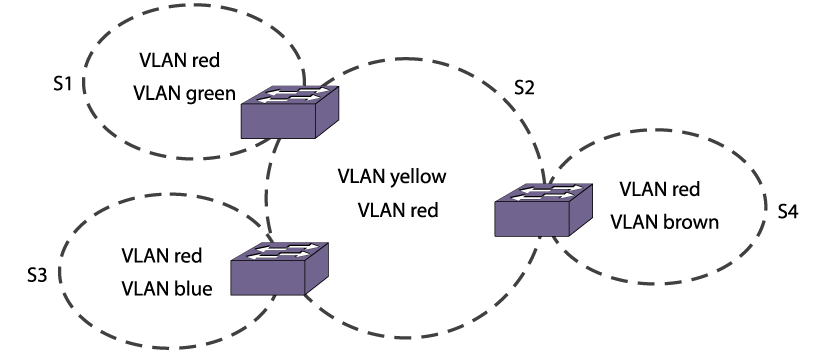Traditionally, the mapping from VLAN (Virtual LAN)s to STP (Spanning Tree Protocol) instances have been one-to-one or many-to-one.
In both cases, a VLAN is wholly contained in a single instance. In practical deployment there are cases in which a one-to-many mapping is desirable. In a typical large enterprise network, for example, VLANs span multiple sites and/or buildings. Each site represents a redundant looped area. However, between any two sites the topology is usually very simple.
Alternatively, the same VLAN may span multiple large geographical areas (because they belong to the same enterprise) and may traverse a great many nodes.
In this case, it is desirable to have multiple STP domains operating in a single VLAN, one for each looped area.
VLANs Spanning Multiple STPDs has five domains. VLANs green, blue, brown, and yellow are local to each domain. VLAN red spans all of the four domains. Using a VLAN that spans multiple STPDS, you do not have to create a separate domain for VLAN red. Instead, VLAN red is “piggybacked” onto those domains local to other VLANs.

In addition, this configuration has these features:

 Print
this page
Print
this page Email this topic
Email this topic Feedback
Feedback